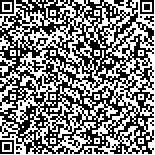|
|
| |
|
|
| 本文已被:浏览 54次 下载 33次 |

码上扫一扫! |
|
|
| 城市既有社区更新的可持续性评估:研究进展与分析框架 |
|
李文竹1, 王润娴2, 王培晓3, 孙彤宇4
|
|
1.华东理工大学艺术设计与传媒学院,讲师;2.同济大学建筑与城市规划学院,博士研究生;3.中国科学院地理科学与资源研究所,助理研究员;4.(通讯作者):同济大学建筑与城市规划学院,教授,sty@tongji.edu.cn
|
|
| 摘要: |
| 城市既有社区更新的可持续性评估
是促进城市可持续发展的重要工具。尽管当
前已存在一系列旨在全球范围内适用的可持
续性评估国际标准,然而,社区层面的可持
续更新研究尚显薄弱,各城市在经济、社会
及环境特征上具有独特性,且既有的评估框
架构建及其权重分配往往受限于主观判断与
地域局限,难以全面而精准地反映特定城市
的实际情况。因此,本研究旨在构建一个适
合我国国情的城市既有社区更新的可持续性
综合评估框架。该框架涵盖层次结构的构
建、评价指标的选择、数据库的建立、要素
权重的分配以及综合与单项评估结果的生
成。通过整合地方专家的专业知识和居民的
实际需求,本研究旨在为城市社区更新提供
精确的指导,并选择适合的可持续更新策
略,进而促进城市既有社区的可持续发展。 |
| 关键词: 城市更新 既有社区 可持续性评
估 评价指标 可持续发展 |
| DOI:10.13791/j.cnki.hsfwest.20240827002 |
| 分类号: |
| 基金项目:国家重点研发计划(2023YFC3805400);国家自然科学基金(52378068, 52408060);中央高校基本科研业务费专项资金(JKZ02252281);华东理工大学教
师产学研践习计划(YZ0130518);上海市教育发展基金会和上海市教育委员会“晨光计划”项目;上海市设计学 IV 类高峰学科资助 |
|
| Sustainability assessment of urban community regeneration: Research progress andanalytical framework |
|
LI Wenzhu,WANG Runxian,WANG Peixiao,SUN Tongyu
|
| Abstract: |
| As global urbanization accelerates, the sustainable renewal of urban communities has
emerged as a central focus in urban development. Sustainability assessment, encompassing design,
construction, and management, serves as a vital quantitative tool for monitoring urban renewal
processes and fostering sustainable community development. In recent years, governments and
research institutions worldwide have developed various assessment systems to advance urban
sustainability, ranging from tools for individual buildings to entire cities. This study begins by
reviewing exemplary cases of sustainable urban community renewal, such as the Sino-Singapore
Tianjin Eco-City and Masdar City in the UAE. These projects, by adopting sustainability assessment
tools tailored to local climates, economies, and cultures, have successfully achieved holistic
community sustainability. In contrast, projects lacking robust assessment frameworks often face
challenges, such as ambiguous objectives and implementation difficulties. The study further examines
established sustainability assessment systems, including LEED-ND, BREEAM Communities, and
DGNB-NS, which address areas such as historic district revitalization, environmental improvements,
and optimizing built environments. Despite their global prominence, these standards are largely
designed for developed countries and struggle to address China’s unique urban renewal challenges,
including aging infrastructure, residential environment upgrades, and transportation network
optimization. Furthermore, community-scale assessment systems remain underdeveloped, offering
limited applicability and maturity compared to tools for buildings or entire cities. Given the distinct
social, economic, and environmental characteristics of cities, existing frameworks often fail to capture
the specific conditions of Chinese urban communities due to subjective judgments and regional
constraints. Therefore, developing a sustainability assessment system tailored to China’s context is a
critical task for guiding community renewal and promoting sustainable development. This study
proposes a comprehensive assessment framework for urban community renewal in China, offering
precise guidance for sustainable development. By integrating qualitative expert input with quantitative
analysis, the study establishes a multidimensional, hierarchical structure of sustainability indicator
framework. Key indicators are identified through methods such as the Delphi technique, expert
scoring, and literature reviews. Appropriate weights are assigned based on the relative impacts of
various factors, using expert knowledge, practical experiences, and mathematical modeling. The
framework evaluates community sustainability through quantitative analysis of indicators and
aggregates these scores using weighted coefficients to derive an overall score. This process identifies
communities requiring priority renewal and highlights critical issues, providing actionable insights for
tailored renewal strategies. The framework emphasizes addressing key indicators with significant
impacts while incorporating expert perspectives and resident needs to develop targeted solutions.
Specifically, the assessment framework comprises four levels—objective, criteria, sub-criteria, and
indicators—spanning three core dimensions: environmental ecology, social inclusion, and economicvitality. At the criteria level, core components such as land use, green buildings, and industrial vitality are analyzed. The sub-criteria level captures the
community’s actual conditions, while the indicator level includes specific, measurable indicators linked to data collection and analysis. This framework
includes three objective layers, 11 criteria layers, 26 sub-criteria layers, and 65 detailed indicators. The environmental ecology dimension evaluates aspects such
as land use, green buildings, transportation, resource efficiency, and landscapes. The social inclusion dimension assesses residential environments, social
services, safety, and operational management. The economic vitality dimension focuses on economic growth and industrial development. Additionally, the
framework introduces an innovative bonus mechanism to encourage the integration of unique local characteristics and indicators. In addition, effective weight
allocation is crucial given the varying influence of different factors. The study applies multiple-criteria decision-making (MCDM) methods, including TOPSIS,
VIKOR, and GRA for objective weighting, and AHP, ANP, and BWM for subjective weighting. The chosen or integration of these methods ensures a balanced
and scientific approach to weight allocation, enhancing decision-making accuracy in complex renewal scenarios. By analyzing community sustainability scores
and indicators, the framework identifies priority renewal areas and critical issues. This provides a foundation for developing cost-effective and issue-specific
strategies. Additionally, the study underscores the importance of involving community residents and neighborhood committees in refining the framework to
align it with actual needs. In the digital era, artificial intelligence (AI) technologies offer transformative potential for sustainability assessments in urban
renewal. AI can support data monitoring, processing, decision-making, and resident engagement, contributing to sustainable community development. Future
research should further explore AI’s application in advancing intelligent and sustainable urban community renewal. |
| Key words: urban regeneration existing communities sustainability assessment evaluation indicators sustainable development |
|
|
|
|


